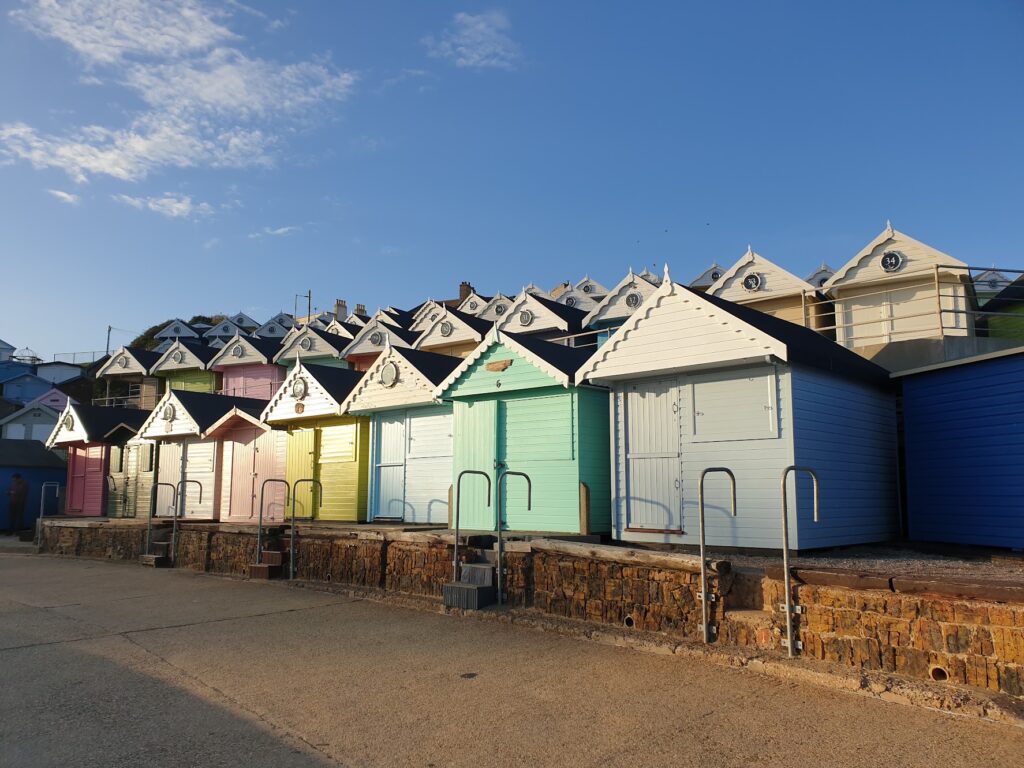
Every day of this adventure is now restricted by the amount of available daylight; but some are even further constrained by public transport options to get me back across the country. Today was such a day, the last of five continuous days of cycling in my longest coast to coast crossing (all thirteen OS maps of it from St Davids) and one that would conclude with a long train journey back to South Wales, where I had just come from. So I had a hard deadline of the 5pm departure from Walton-on-the-Naze, or I would not be going to bed in Swansea!
I still find it remarkable how much you can fit into a single day if you try. It is days like today that are keeping this journey alive and it has to be a pretty slick operation to work. Aside from the actual cycling, there are so many other important factors: working out the required start time; getting enough breakfast; being ready to leave; knowing the route; where and when to stop and refuel; photo stops along the way and at the end; buying and collecting train tickets for the right trains at the best price – with bike space reservations if needed; getting across London between mainline stations; finding food to eat before you board; where to stay at the other end (ideally close to the station) and what to do with your bike when you arrive. But work it can, and generally does, despite all of these possible points of failure. So I left Ware on another cold, clear morning and headed out into Hertfordshire, and then Essex, to explore parts of the country I knew nothing about.
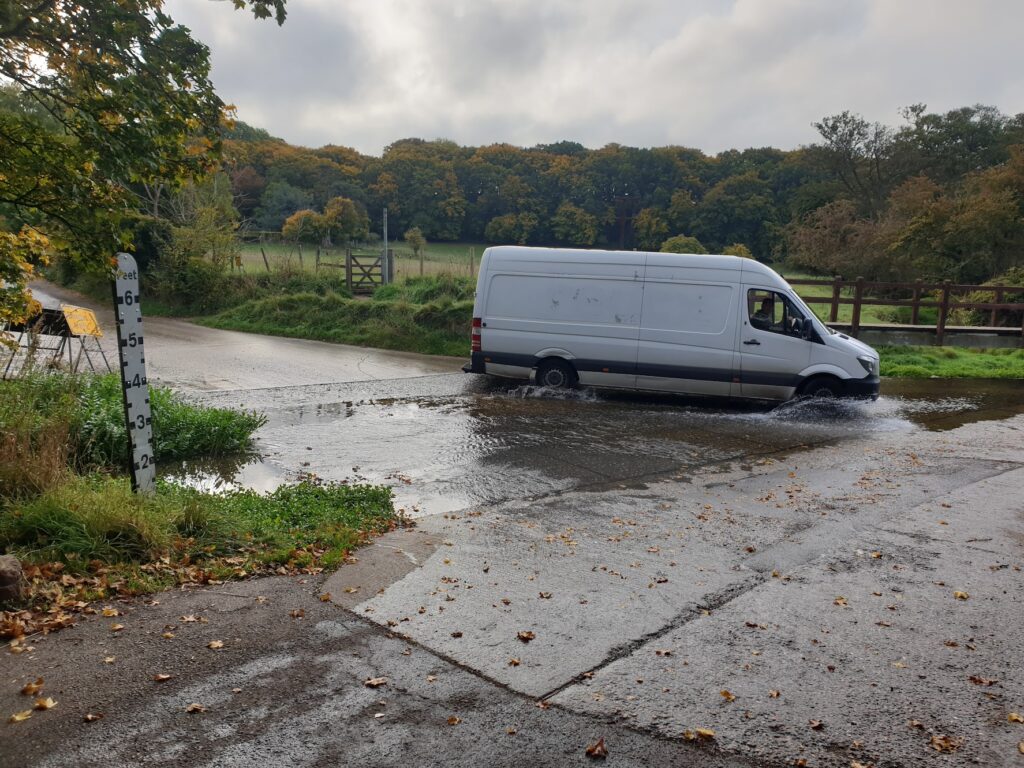
It was a very different day to yesterday. Then, I stayed on mostly minor roads; but had to zig zag my way across the country. Now, after the first hour or so to Bishops Stortford, which involved some quiet lanes, I found myself setting out on long, straight, eastbound and moderately busy B roads that didn’t mess about; but rather lacked in scenic beauty. The towns I passed through were attractive enough: I stopped in Bishops Stortford town centre, which seemed pleasant, and more briefly again in Great Dunmow. But I found it difficult to get excited about this part of the country, and this feeling persisted most of the day. It isn’t flat; but it isn’t hilly. Nothing offended; but not much required a second look. I don’t really remember much that told me I couldn’t have been somewhere else. Nothing distinctive, except perhaps people’s accents, to set it apart.
I had lunch in Braintree and found a very sunny table outside in the market place, where there was actually a real market. I chatted to the lady at the next table. Where have you come from, she asked. Ware, I said. Yes, where have you come from? Ware, I repeated, and then explained that this was my answer and not another question. Luckily, she understood, or we could have gone around in circles for some time. We talked about how Braintree used to be and how it has changed. She seemed to be suggesting it wasn’t the town it had been. I said I was enjoying the peacefulness of the completely pedestrianised town centre. Oh, yes, she said, that is quite new. The traffic used to be awful. Not all bad, then. Actually, I was expecting somewhere with less character and I thought it was OK. It has its own train line in to London, too, and a kind of landmark brick water tower in the centre of town. Which not every town can say.
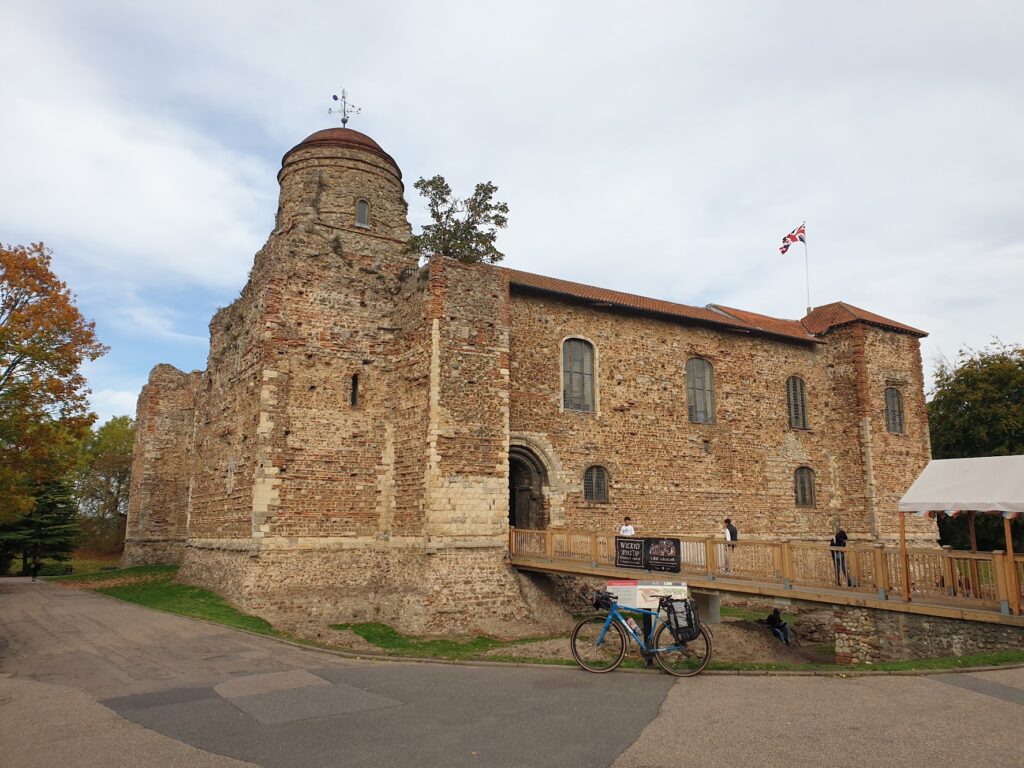
Nevertheless, one jacket potato later I was on my way again. I fiddled through some quieter lanes and a couple of nice villages and emerged on a road that took me in to Colchester, past the zoo. Colchester was granted city status in 2022 (along with other former towns like Doncaster and Douglas and Dunfermline) and it felt big. The city centre contains an impressively wide and grand high street, complete with ornate red brick and stone town hall with a grand clock tower. Colchester claims to be Britain’s oldest recorded town. There were plenty of examples of antiquity. The Romans made Camulodunum their first colonia in Britain, which was the highest rank of Roman city. That was in around AD49, and it was followed by Lincoln and Gloucester. There are bits of the Roman town wall, including a couple of gateways, still visible here and there, in amongst the more modern buildings. Most impressive of all, however, was the castle, which is a grand flint stone affair with a moat and it still stands largely intact in the lovely Castle Park.
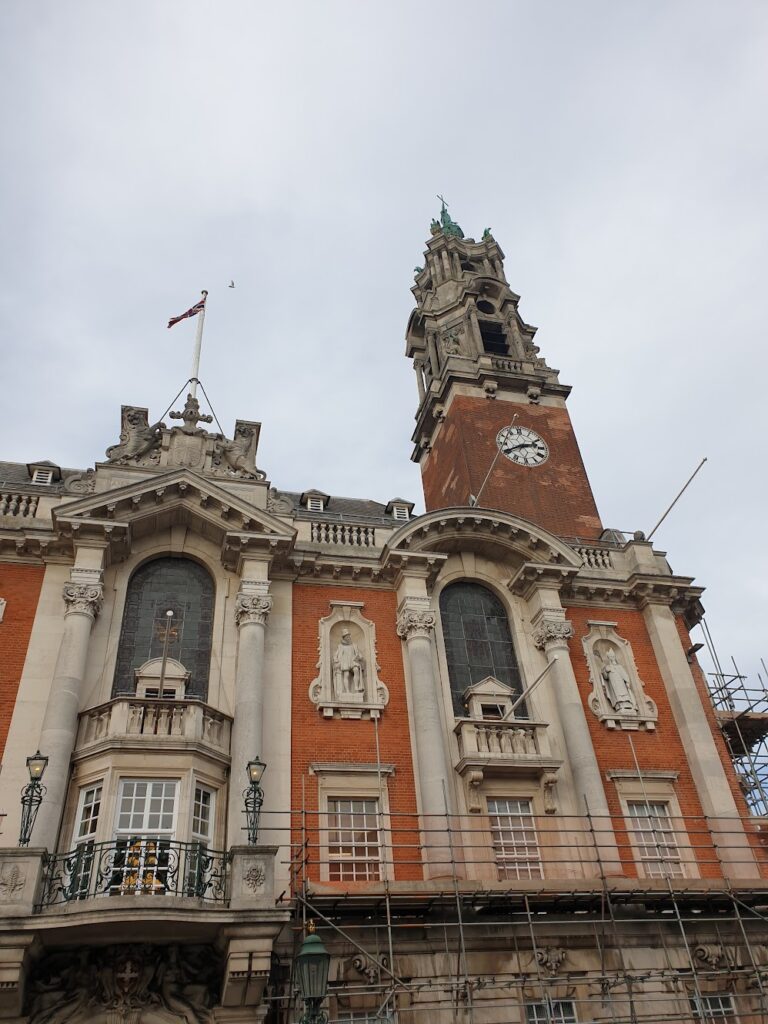
I left town by way of a cycle path along the banks of the River Colne, today a muddy, tidal creek. This is the highest point reached by boats from the sea. The tide was out and it looked like not much more than a ditch filled with rusting boats, stuck in the mud. But this is also the lowest bridging point, and I had to pass through on my way to the coast. It soon opened out into a much wider coastal inlet and I rejoined the road by the train station at the very pretty quayside village of Wivenhoe, where I would happily have lingered for a pint or two among the boatyards. But I had a train to catch.
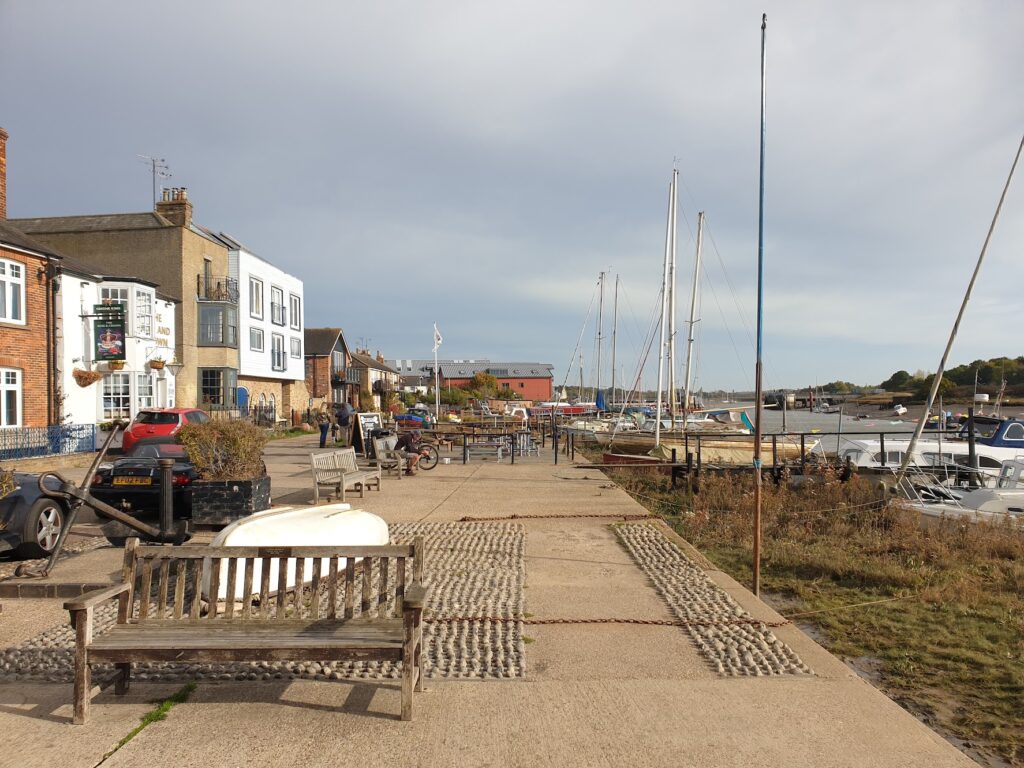
I found myself back on busy roads for the final section of my ride. The villages were more attractive than the landscape. Great Bentley was particularly memorable, with probably the largest village green I have ever seen. It is simply vast. No wonder it was a multiple winner of Essex Village of the Year. Then, at the top of a rise, I saw over the fields the rows of huge cranes in the container port at Felixstowe, in Suffolk, surprisingly close, despite being across another large estuary from nearby Harwich. Each of these places is at the end of a road, somewhat cut off from what lies either above or below. But my road ran out at Walton-on-the-Naze, home to the second longest pier in England. It wouldn’t be the second prettiest; but what it lacks in beauty, it absolutely made up for in length. I think it was open; but despite the sunshine, the wind was whipping in from the sea quite fiercely, and I didn’t fancy going anywhere near the end today. So I contented myself with taking photos of the many rows of colourful beach huts that unusually stood in raised tiers, one behind the next. Everywhere was pretty quiet, except for the roar of the wind and the crashing of the waves, just as it had been five days earlier in St Justinians. I had reached the end of my widest crossing. It was time to catch the train, to London, and then to Wales, to do it all again!
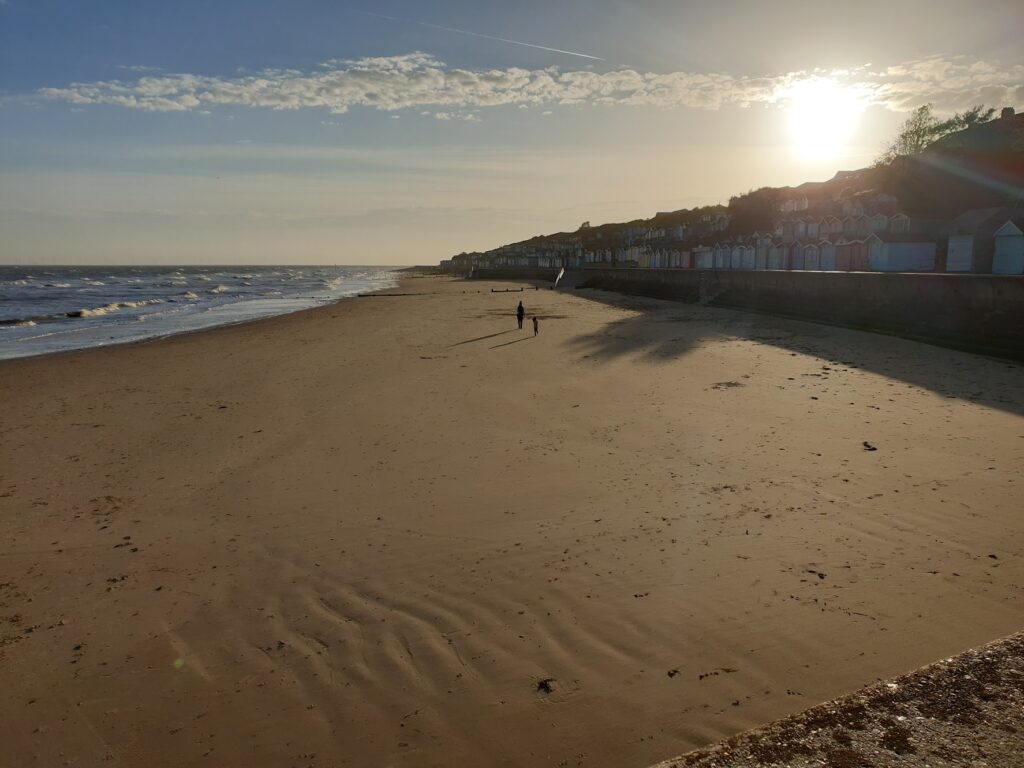

One reply on “Maps 167 to 169 – Ware to Walton Pier”
I’ve cycled to quite a lot of question-word places: How, Hoo, Ware and Wye. Sadly I can’t find a Watt St, Ware, or a Wenn Rd, Wye.